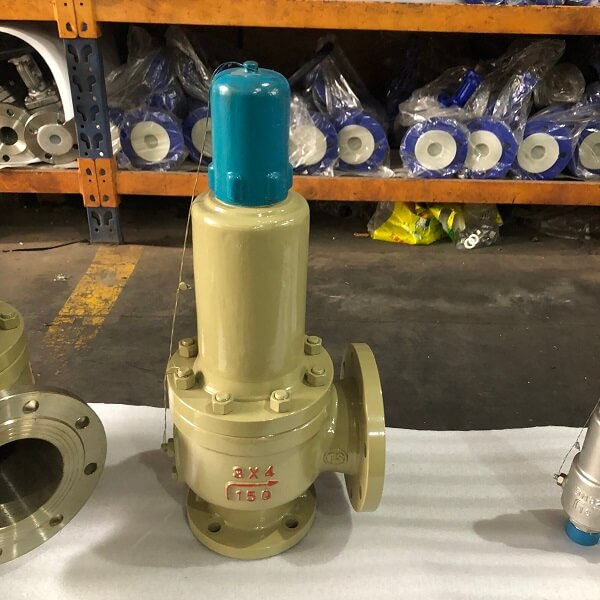As the Safety Valve is an automatic valve, there are many differences in structure and performance parameters with the general valve, especially some terms are easily confused. In order to make the selector more clearly understand the safety valve, and can choose correctly, will be some of the main terms to explain.
1 Relief Valve: An automatic valve that uses its own force to discharge a specified amount of fluid without any external force. To prevent the pressure in the system from exceeding a predetermined safe value. When the pressure returns to normal, the valve is closed and the medium continues to flow out.
2 Direct Load Safety Valve: a Safety Valve that uses direct mechanical loads such as weights, lever weights, or springs to overcome the forces exerted by the medium pressure under the disc.
3 Power Assisted Relief Valve: the Relief Valve can be opened below normal opening pressure by means of a power assisted device. Such valves shall meet the requirements of the standard even if the auxiliaries fail.
4 Safety Valve with supplementary load: The Safety Valve maintains an increased, strong sealing additional force until the pressure at the inlet reaches the opening pressure. The additional force (supplementary load) may be provided by external energy sources The relief valve should be released reliably when the open pressure is reached. The size should be set so that when the additional force is not released, the relief valve can still achieve the rated displacement with the inlet pressure not exceeding the percentage of the opening pressure stipulated by the national regulations.
5 Pilot Relief Valve: a relief valve driven or controlled by the discharge of media from the pilot valve. The pilot valve itself shall be a Direct-load Safety Valve conforming to the requirements of the standard.
6 Opening pressure (set pressure) : The inlet pressure at which the disc of the relief valve begins to rise under operating conditions, at which a lateral opening height begins, with the medium in a continuous discharge state that is visually or acoustically sensed.
7 Discharge pressure: The inlet pressure when the disc reaches the specified opening height. The upper limit of discharge pressure shall be subject to the relevant national standards or regulations.
8 Over pressure: The difference between the discharge pressure and the opening pressure, usually expressed as a percentage of the opening pressure.
9 Return pressure: After the discharge disc re-contact with the seat, that is, the opening height becomes zero when the inlet pressure.
10 Opening and closing pressure difference: The difference between the opening pressure and the return pressure is usually expressed as a percentage of the opening pressure, and only when the opening pressure is very low is expressed as “MPA” .
11 Back pressure: Pressure at relief valve outlet.
12 Rated discharge pressure: the upper limit of the discharge pressure specified by the standard.
13 Seal test pressure: The inlet pressure at which the seal test is performed. The leakage rate through the seal face of the closing member is measured at this pressure.
14 Open Height: the actual lift of the disc from the closed position.
15 Port Area: The minimum cross-sectional area between the inlet end of the valve and the seal face of the closure, used to calculate the theoretical displacement without any resistance.
16 Runner diameter: The diameter corresponding to the runner area.
17 Curtain Area: The cylindrical or conical channel area formed between the sealing surfaces of the disc as it rises above the seat.
18 Discharge Area: The minimum cross-sectional area of the fluid channel during valve discharge. For full-open Relief Valves. Discharge area is equal to runner area; for micro-opening Relief Valve, discharge area is equal to certain area.
19 Theoretical Displacement: Is the calculated displacement of an ideal nozzle with a port cross-section area equal to the port area of the relief valve.
20 Emission factor: ratio of actual to theoretical emissions
21 Rated displacement factor: The product of the displacement factor and the reduction factor (0.9) .
22 Rated Displacement: The part of the actual displacement that is allowed to be used as the reference for the relief valve.
23 Equivalent calculated displacement: refers to the pressure, temperature, medium properties and other conditions and rated displacement of the same applicable conditions, the calculation of the safety valve row.
24 Frequency hopping: The relief disc moves rapidly and abnormally back and forth, in which the disc contacts the seat.
25 Flutter: The relief disc moves rapidly and abnormally back and forth, with the disc not touching the seat.
Post time: Nov-25-2021





